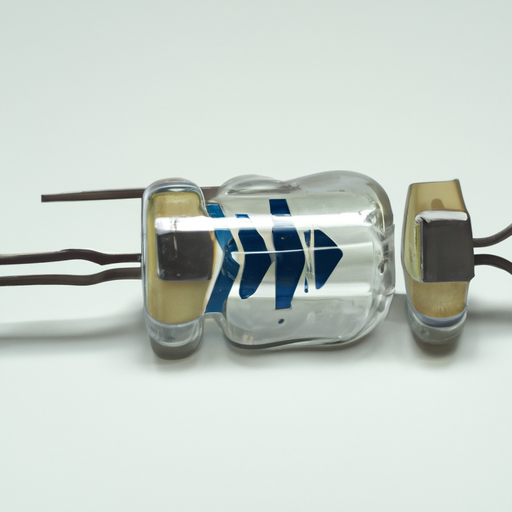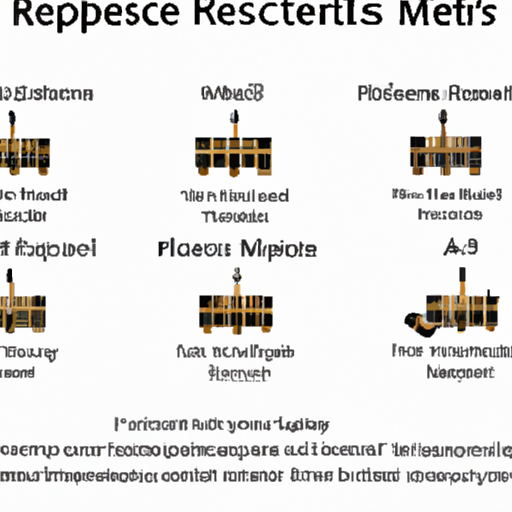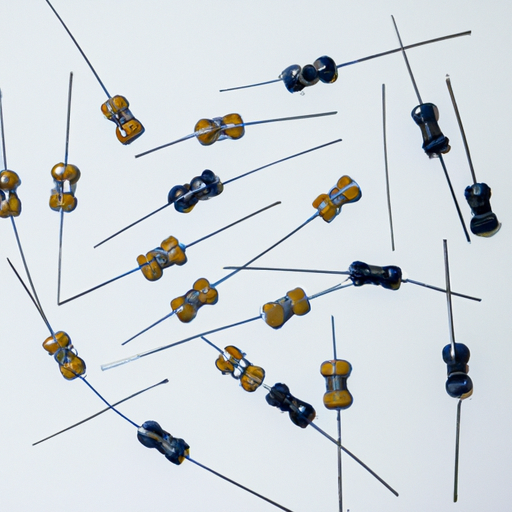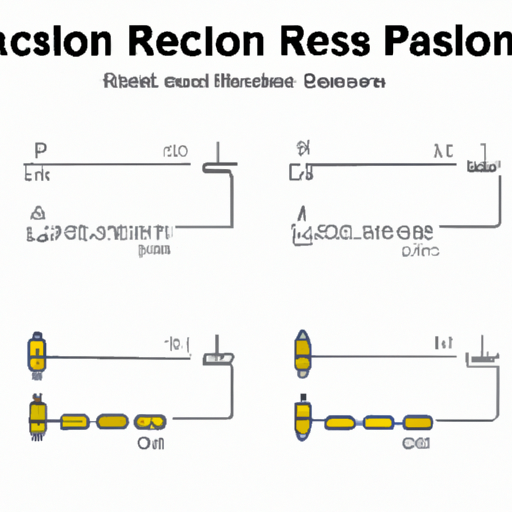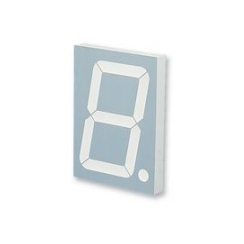What is a porcelain tube resistor?
What is a Porcelain Tube Resistor?
I. Introduction
In the realm of electrical engineering, resistors play a crucial role in controlling the flow of electric current. Among the various types of resistors, porcelain tube resistors stand out due to their unique properties and applications. This article aims to provide a comprehensive understanding of porcelain tube resistors, exploring their historical background, composition, working principles, advantages, applications, and future trends.
II. Historical Background
The development of resistors can be traced back to the early days of electrical engineering. As technology advanced, the need for reliable and efficient resistors became apparent. Initially, resistors were made from simple materials like carbon and wire. However, as electrical systems grew more complex, engineers sought materials that could withstand higher temperatures and environmental stressors.
Porcelain emerged as a viable option due to its excellent insulating properties and durability. The introduction of porcelain tube resistors marked a significant evolution in resistor technology, allowing for better performance in high-voltage applications. Over time, these resistors have been refined, leading to the advanced designs we see today.
III. Composition and Structure
A. Materials Used in Porcelain Tube Resistors
Porcelain tube resistors are primarily composed of two key materials: porcelain and conductive materials.
1. **Porcelain as an Insulator**: Porcelain is a ceramic material known for its high dielectric strength, making it an excellent insulator. This property is crucial in preventing electrical leakage and ensuring the safe operation of resistors in various applications.
2. **Conductive Materials**: The resistive element within porcelain tube resistors is typically made from conductive materials such as carbon or metal oxides. These materials are chosen for their ability to provide a specific resistance value while maintaining stability under varying temperatures.
B. Design and Construction of Porcelain Tube Resistors
Porcelain tube resistors come in various shapes and sizes, but they generally feature a cylindrical design. This design allows for efficient heat dissipation, which is essential for maintaining performance. The internal structure of these resistors is engineered to optimize the flow of electricity while minimizing heat buildup.
IV. Working Principle
A. How Porcelain Tube Resistors Function
The primary function of a porcelain tube resistor is to limit the flow of electric current in a circuit. When an electric current passes through the resistor, it encounters resistance, which converts some of the electrical energy into heat. This process is governed by Ohm's Law, which states that the voltage across a resistor is equal to the current flowing through it multiplied by its resistance.
B. The Role of Resistance in Electrical Circuits
Resistance is a fundamental property in electrical circuits, influencing how devices operate. By controlling the amount of current flowing through a circuit, resistors help protect sensitive components from damage and ensure that devices function correctly.
C. Heat Dissipation and Thermal Management
One of the critical aspects of porcelain tube resistors is their ability to dissipate heat effectively. The cylindrical design and the use of porcelain as an insulating material allow for efficient thermal management, preventing overheating and ensuring longevity.
V. Advantages of Porcelain Tube Resistors
Porcelain tube resistors offer several advantages that make them suitable for various applications:
A. High-Temperature Resistance
Porcelain can withstand high temperatures without degrading, making these resistors ideal for high-voltage applications where heat generation is a concern.
B. Durability and Longevity
The robust nature of porcelain ensures that these resistors are durable and can last for many years, even in harsh environments.
C. Electrical Insulation Properties
The excellent insulating properties of porcelain prevent electrical leakage, enhancing the safety and reliability of electrical systems.
D. Resistance to Environmental Factors
Porcelain tube resistors are resistant to moisture, chemicals, and other environmental factors, making them suitable for use in industrial and outdoor applications.
VI. Applications of Porcelain Tube Resistors
Porcelain tube resistors are utilized in a wide range of applications, including:
A. Use in High-Voltage Applications
Due to their high-temperature resistance and durability, porcelain tube resistors are commonly used in high-voltage power supplies and electrical distribution systems.
B. Role in Industrial Machinery
These resistors are often found in industrial machinery, where they help regulate current and protect sensitive components from damage.
C. Applications in Telecommunications
In telecommunications, porcelain tube resistors are used in various devices to ensure stable performance and signal integrity.
D. Use in Consumer Electronics
While less common in consumer electronics, porcelain tube resistors can still be found in specific applications where high reliability and performance are required.
VII. Comparison with Other Types of Resistors
When comparing porcelain tube resistors to other types, several factors come into play:
A. Comparison with Wire-Wound Resistors
Wire-wound resistors are known for their precision and stability but may not withstand high temperatures as effectively as porcelain tube resistors. The latter offers better thermal management and durability.
B. Comparison with Carbon Film and Metal Film Resistors
Carbon film and metal film resistors are often used in low-power applications. While they provide good performance, they may not match the high-temperature resistance and environmental durability of porcelain tube resistors.
C. Advantages and Disadvantages of Porcelain Tube Resistors
While porcelain tube resistors offer numerous advantages, they can be more expensive than other types. Additionally, their size may be a limiting factor in compact electronic designs.
VIII. Installation and Maintenance
A. Guidelines for Installing Porcelain Tube Resistors
Proper installation is crucial for the performance of porcelain tube resistors. It is essential to ensure that they are mounted securely and that connections are made correctly to prevent overheating and failure.
B. Maintenance Practices to Ensure Longevity
Regular inspections and cleaning can help maintain the performance of porcelain tube resistors. Ensuring that they are free from dust and debris will enhance their longevity.
C. Safety Considerations During Installation and Use
When working with porcelain tube resistors, it is vital to follow safety guidelines to prevent electrical shock and ensure safe operation. Always disconnect power before installation or maintenance.
IX. Future Trends and Innovations
A. Advances in Materials Science Affecting Porcelain Tube Resistors
Ongoing research in materials science may lead to the development of new composite materials that enhance the performance of porcelain tube resistors, making them even more efficient and durable.
B. Potential for New Applications in Emerging Technologies
As technology evolves, the demand for high-performance resistors in emerging fields such as renewable energy and electric vehicles may open new avenues for porcelain tube resistors.
C. Environmental Considerations and Sustainability
With increasing awareness of environmental issues, the development of sustainable manufacturing processes for porcelain tube resistors may become a priority, ensuring that they meet modern ecological standards.
X. Conclusion
Porcelain tube resistors are a vital component in the world of electrical engineering, offering unique advantages that make them suitable for a wide range of applications. Their high-temperature resistance, durability, and excellent insulating properties ensure their continued relevance in modern technology. As advancements in materials science and engineering continue, the future of porcelain tube resistors looks promising, paving the way for new innovations and applications. Understanding these resistors is essential for anyone involved in electrical engineering, and further exploration of their capabilities can lead to exciting developments in the field.
XI. References
For those interested in delving deeper into the topic of porcelain tube resistors, the following resources provide valuable insights:
1. "Electrical Engineering: Principles and Applications" by Allan R. Hambley
2. "Resistor Technology: A Comprehensive Guide" by John Smith
3. Academic journals and articles on materials science and electrical engineering advancements.
By exploring these resources, readers can gain a more profound understanding of porcelain tube resistors and their significance in the electrical engineering landscape.

